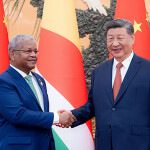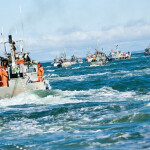Russia’s Rosselkhoznadzor has done what it had promised, and ban for Norwegian salmon came in force May 5th. Official statement was as follows: “We found that the products do not comply with Russian sanitary standards resulting a risk of import of unsafe products.”
The import of chilled fish to Russia is temporarily restricted for uncertain period. In addition, Rosselkhoznadzor has introduced the regime of intensive laboratory testing of frozen fish originating from 13 Norwegian suppliers.?
Russian market players have different views on this measure, but they share the opinion that the ban will eventually affect the end consumer.
?A number of Russian importers of Norwegian products see the ban as a danger of the Russian fish market monopolization as since May 5 about 80 percent of Norwegian trout imported to Russia will be controlled by a single Russian importer, namely “Russian Fish Company.”?
In a statement the Russian Fisheries Union indicated that “the actions of Rosselkhoznadzor are non-transparent, and not clear to the business.”?
In my opinion, which many other Russian businessmen share, the ban will help to promote the production of Russian fishing enterprises on domestic market. Russia can deliver a wide variety of wild fish of truly superior quality, like blueback salmon, chum salmon, coho, hunchback salmon, etc, so the Norwegian salmon can be partly substituted by the domestic fish.?
Talking with Russian businessmen I saw that they do not think that reducing volumes of Norwegian salmon would leave the Russian market with no fish. Indeed, in 2011 about 450,000 metric tons of wild salmon was caught in Russia. On the other hand, in 2012 allowable quota for all species of salmon for the fishing season for Kamchatka fishermen is just about 150,000 metric tons. It’s explained by significant reduction of salmon population as compared to previous years. If in 2011 in all regions of the Russian Far East the total volume of wild salmon was about 500,000 metric tons, this year only about 275,000 metric tons are assumed.
?There’s also another concern to consider. Every year Russia exports more than 100,000 metric tons of the Pacific salmon to China, and many businessmen believe that the government should develop such economic conditions under which domestic fishing companies would not pay 18 percent VAT when they supply fish to the domestic market.
“Messaging” this downside on domestic market could indeed stimulate Russian fisheries to turn to the Russian consumers.





